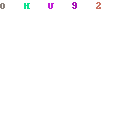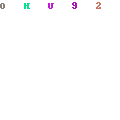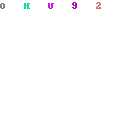Type of Damages Raised by PSW.Generic10.AHQV
- The infection contains keyloggers which can be used to steal sensitive data like passwords, credit card, bank account information etc.
- Creates backdoor for intended hackers who will be able to control your computer and steal your important information such as private data and banking details.
- Makes your computer restart or shutdown frequently and unreasonably. Sometimes you even found your PC is totally crash down.
- Blocks the functions of anti-virus programs, you can’t run them as well as updating them via Internet.
- You will get many unwanted pop ups on your computer. The virus corrupts your system registry and uses it to deploy annoying pop up ads out of nowhere.
- Slows down your computer considerably and you will feel like your computer is stuck.
- Attacks and damages your system files and programs, you will find your computer is running weirdly and some programs are not able to run any more.
Definition of PSW.Generic10.AHQV
Why the anti-virus cannot help?
How come my trusted anti-virus program fails to delete the Trojan? For one moment you thought it is gone, but it simply comes back after reboot. Here are reasons:
- Files are downloaded or generated to modify secure-related settings, it disables your anti-virus program to some extent.
- Backdoor is opened for information exchange, which means it could also introduce other malware into your system. With more malicious files and registered in and their interferences, it is always hard for anti-virus program to delete it.
- The backdoor is also a passage for the remote hacker behind it to gain privilege over your computer, you'll never know when your firewall shuts down, and you have no idea why your anti-virus program stops working.
Step-by-step Instruction on How to Eradicate PSW.Generic10.AHQVManually
Step1:Restart your system and get into the safe mode with networking As the computer is booting but before Windows launches, tap the "F8 key" continuously which should bring up the "Windows Advanced Options Menu" as shown below. Use your arrow keys to highlight "Safe Mode with Networking" option and press Enter key.

Step2:Please stop the processes listed below Press CTRL+ALT+DEL key to open Task Manager

random.exe
Step3:Go to the Registry Editor to delete all related entries listed below Click “Start” menu, hit “Run”, then type “regedit” click “OK”.


Related registry keys:
HKEY_CURRENT_USER\Software\Microsoft\Windows\CurrentVersion\Internet Settings 'WarnOnPostRedirect' = '0'
HKEY_LOCAL_MACHINE \Software \Microsoft \Windows \CurrentVersion \RunServicesOnce
HKEY_LOCAL_MACHINE\SOFTWARE\Paladin Antivirus
HKEY_CLASSES_ROOT\Folder\shellex\ContextMenuHandlers\SimpleShlExt
HKEY_CURRENT_USER\Software\Paladin Antivirus
HKEY_CURRENT_USER\Software\Classes\secfile
HKEY_CURRENT_USER\Software\Malware Defense
Step4: Delete related files and folders
%Temp% otjesjty.mof
C:\Program Files\Apoint\Apoint.exe
C:\Windows\system32\taskeng.exe
C:\Windows\system32\taskhost.exe
%Documents and Settings%\[UserName]\Start Menu\ Update.lnk
Video on How to Deal with Processes and Registries
Please be noted: if you don't have strong computer knowledge you could harm your operating system. Be careful and use it only if you are an experienced computer user. Otherwise, please get instant tech support from Tee Support experts 24/7 available.
No comments:
Post a Comment